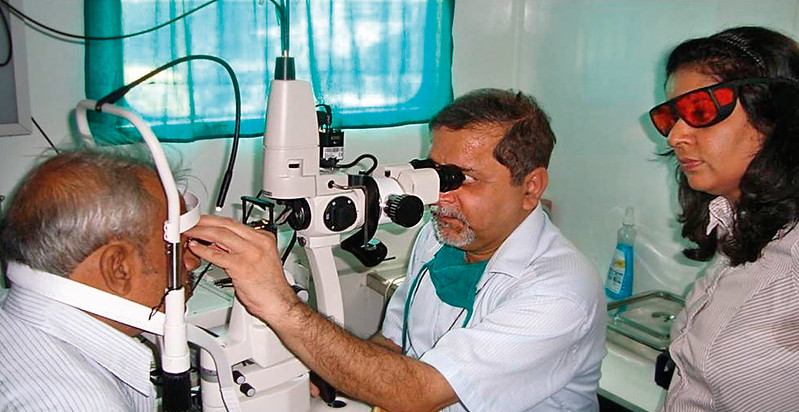Affordable Eye Care: The Aravind Eye Care System
 In a world where quality health care often comes with a hefty price tag, the Aravind Eye Care System shines as a remarkable exception. Founded in 1976 by the visionary Dr. Govindappa Venkataswamy, this institution has transformed from a modest 11-bed facility into a vast network dedicated to affordable, high-quality eye care.
In a world where quality health care often comes with a hefty price tag, the Aravind Eye Care System shines as a remarkable exception. Founded in 1976 by the visionary Dr. Govindappa Venkataswamy, this institution has transformed from a modest 11-bed facility into a vast network dedicated to affordable, high-quality eye care.
About Venkataswamy
Venkataswamy, fondly known as “Dr. V,” was born on October 1, 1918, in Vadamalapuram, Tamil Nadu In, India. After earning his medical degree from Stanley Medical College in 1944, he served in the Indian Army Medical Corps. However, Venkataswamy retired early due to severe rheumatoid arthritis. Undeterred, he specialized in Ophthalmology and went on to perform more than 100,000 successful eye surgeries. Additionally, Venkataswamy introduced innovative programs to combat blindness in India, including outreach camps and an ophthalmic assistants training program. In 1973, he was awarded the Padmashree by the Government of India for his contributions.
Aravind Eye Hospital
Aravind Eye Hospital was established by Venkataswamy without any initial capital, business plan or safety net, relying primarily on faith in its mission to eliminate needless blindness. Since its inception, Aravind has expanded to include seven tertiary centers, seven secondary centers, six community eye clinics, 80 vision centers and eye banks. The Postgraduate Institute of Ophthalmology and the Lions Aravind Institute of Community Ophthalmology provide essential training. At the same time, Aurolab manufactures affordable, high-quality ophthalmic consumables exported to more than 160 countries.
In the 2022-23 year, Aravind performed more than 704,000 surgeries and had more than 5.7 million outpatient visits. Remarkably, more than 50% of these surgeries were provided either free or at highly subsidized rates to people experiencing poverty. This is made possible via the earnings from paying patients. Aravind’s efficient service delivery and innovative practices, such as an “assembly line” system in operating rooms, enable doctors to perform a high volume of surgeries while maintaining exceptional quality.
Furthermore, Aravind’s outreach program, supported by organizations like Lions Clubs International and Rotary International, extends its services to villages lacking eye care facilities. The model, originally focused on cataract screenings, now provides comprehensive eye exams and necessary treatments, bringing those requiring surgery to the base hospital for free procedures.
Sustainability and Innovation
Aravind has optimized patient care practices to reduce its carbon footprint. Spectacle delivery times and transport emissions have been significantly reduced through an innovative online selection and central lab fitting process. The hospital’s energy-efficient buildings, solar plant and sustainable dining services further align its social, environmental and financial goals.
Enhancing Productivity
Recognizing the scarcity and cost of ophthalmologists, Aravind reassigned routine tasks to mid-level ophthalmic personnel, boosting the productivity of ophthalmologists by more than four times. Medical schools and business schools worldwide have replicated this innovative approach. Moreover, Aravind now provides consultancy services and training to eye hospitals and personnel globally.
Conclusion: A Model for Global Health
Aravind Eye Care System stands as a testament to the power of innovative, compassionate health care. By transforming how eye care is delivered, Aravind not only provides sight to millions but also serves as a model for sustainable health care worldwide. As Aravind continues to expand its reach, the foundation’s vision of eradicating needless blindness and fostering a healthier world becomes increasingly tangible.
– Sandeep Kaur
Sandeep is based in Manchester, UK and focuses on Good News and Global Health for The Borgen Project.
Photo: Flickr
